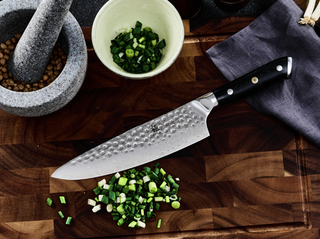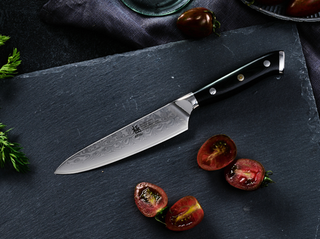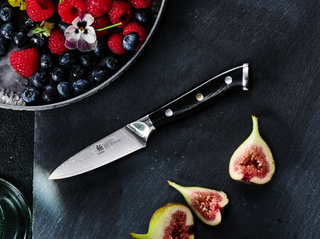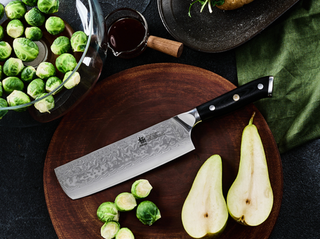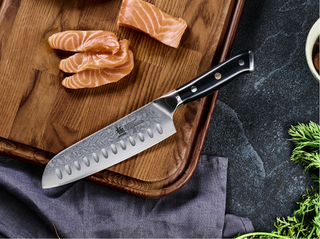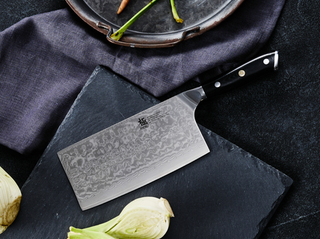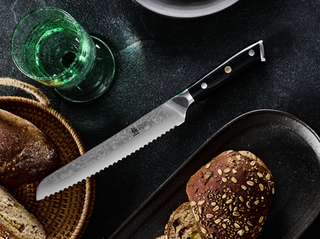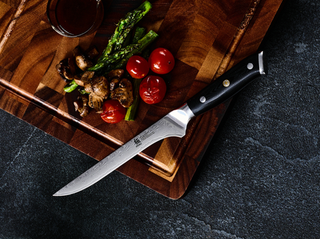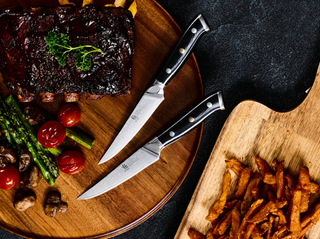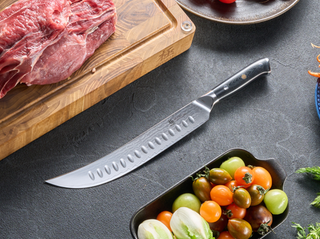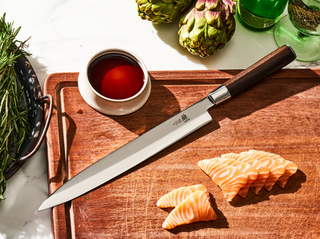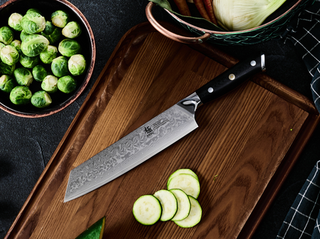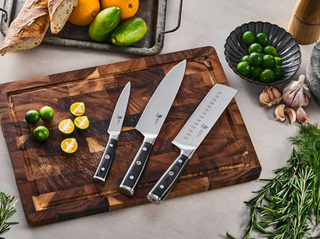Let’s face it: lemons are not only good for squeezing into the tea. It is all in the way you cut them. A clean cut may translate to extra juice, nicer garnish, and easier preparation.
I never realized how often I used lemons—until I needed to cut one properly. Whether I’m sprucing up a cocktail or prepping a citrus garnish, knowing how to cut a lemon the right way makes all the difference.
1. How to Cut a Lemon Twist
If you are cutting lemon twists, you want them to be visually exciting, yet not overwhelming. Follow these steps to cut lemon twists:
- First, select a firm lemon with smooth peel.
- Second, clean it and dry it thoroughly. You do not want dirt and wax in your drink.
- Third, cut a strip of peel with a paring knife or vegetable peeler. The white pith below is bitter.
- Then, trim the edges of the peel for a clean rectangle.
- Lastly, rub it over your glass to extract the oils and then either drop it in your glass or hang it on the edge.
For lemon twists, you want a blade that cuts through the peel without tearing it. I use the 7" Santoku Knife, Daimyo Series, which offers me exceptionally easy control over the angle and depth of my cutting.
2. How to Cut a Lemon Wedge
Cutting your lemon into wedges makes it more appealing and easier to squeeze. However, when cutting lemon wedges, you have to make sure your cut keeps the juices inside the lemon and minimizes spills.
Follow these steps:
- To start with, cut off the ends of the lemon.
- Then, cut it along the center.
- Next, you can cut each half in half again, and again, depending on how thin you like your wedges. Each lemon will yield 6-8 wedges.
- Finally, cut a shallow slit in the centre of the flesh. This is a trick that helps it fit on the rim of a glass.
For cutting lemons into wedges, you want a knife that provides a clean cut without squashing the lemon at the edges. Consider this 7" Nakiri Knife from the Shogun Series. It has a flat blade, which chops fast and accurately.
3. How to Cut a Lemon for Drinks
If you’re prepping for a party, you’ll want to know how to cut lemons for drinks in a way that they look great floating in water pitchers or cocktails. Follow these steps, whether you are going for wheels or half-moons.
How to cut Lemon wheels:
- Firstly, cut off the ends of the lemon.
- Secondly, slice the lemon crosswise into ¼-inch rounds.
How to Cut Half-moons:
- Follow the same steps as above.
- Then, cut each round in half for a thinner, more versatile shape.
Here I tend to reach my 7" Cleaver Knife of the Samurai Series. It is heavy and broad enough to provide me with even and thin slices, and the wide blade lets me lift them right off the cutting board.
4. My Go-To Knives for How to Cut a Lemon Perfectly
Over the years, I’ve learned that using the right knife makes all the difference when figuring out how to cut a lemon cleanly and efficiently.
Lemons are tender things--they bruise so easily, and their juice will blunt a blade in a little while. This is the reason I use three types of knives when it comes to cutting lemons in accordance with various requirements, and each of them adds a certain value to the palette.
Shogun Series 7" Nakiri Knife
I pull out my Shogun Series 7" Nakiri Knife when I need ultra-thin slices, particularly when I am doing wedges or thin wheels. Its straight, razor-sharp edge consists of 67 layers of Damascus steel. And, it provides me with smooth, even cuts without smashing the fruit.
Samurai Series 7" Cleaver Knife
When I have a more serious prep ahead of me, such as juicing a whole batch of lemons to make drinks or preparing a party, I adore the Samurai Series 7" Cleaver Knife.
I love the weight and balance of the full-tang, high-carbon stainless steel blade. Plus, having to cut lemons with it is a breeze.
And, its broad blade allows scooping it all up and pouring it directly into a pitcher or tray.
Daimyo Series 7" Santoku Knife
And the Daimyo Series 7" Santoku Knife is the one I reach for when I want fineness, such as peeling balls of peels to make twists, or when I want to do pretty garnishes.
It is super light, exceptionally sharp due to the 440C steel, and the rosewood handle feels great in my hand.
I reach for it the most when I want to show off through decorative cuts, particularly when I have to be delicate yet precise.
Each of these knives has earned a permanent spot in my kitchen for a reason. Together, they’ve totally transformed the way I approach citrus prep. Moreover, they’ve made learning how to cut a lemon twist, wedge, or wheel not only easier but more enjoyable.
Conclusion: How to Cut a Lemon
Now that you know how to cut a lemon in four different ways, you’ll never go back to guessing or eyeballing your slices again.
From how to cut a lemon twist to mastering the wedge and beyond, it’s all about having the right technique—and the right knife.
Whether you’re adding citrus to cocktails or learning how to cut a lemon for garnish, these tips will level up your prep game.
Want to elevate your own kitchen game? Explore the full line of expertly crafted knives at Kyoku Knives and discover the cutting tools that professional chefs and home cooks alike swear by.
